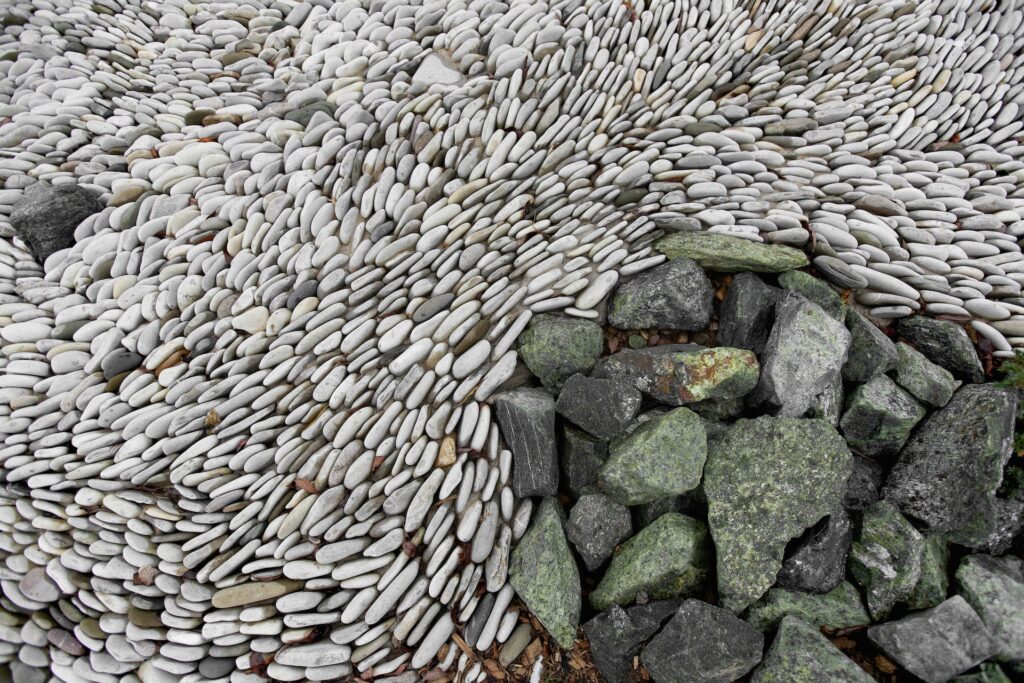Paths are an important part of every yard and garden. Their main function is to allow free movement around the yard without getting dirty with dust and mud. Of course, it is good that they are not only practical, but also look good. Do-it-yourself garden paths made of small and large pebbles can be both useful and beautiful. The construction of a pebble path is not difficult, but it has some specifics – as well as the care of it.
Pebbles are a natural stone material with small dimensions. It is curious that, according to some estimates, pebbles have an even better morphological structure than granite.
Choosing the right pebble
Pebbles are typically oblong, flat or rounded, according to how they were formed and where they were quarried. Sea pebbles, for example, are usually smoother than those quarried in a river or lake. Sea pebbles are considered to be a bit more difficult to work with as they are smoother and therefore more slippery.
If you are wondering whether to choose larger or smaller stones, you can settle on an option that combines different sizes. Such a combination will harmoniously combine with wood, concrete slabs, metal railings and a variety of other materials used in the yard and garden, as well as with a variety of garden plants, whose beauty it will emphasize.
There are both naturally formed and quarried and man-made pebbles on the market. Marble pebbles for example are very much in demand in landscape design. Such material is a by-product of marble processing. The small marble fragments are then polished to a smooth surface. White marble pebbles are ideal for combining with garden plants. Other rocks from which pebbles are often formed or produced are granite, quartzite, etc.

Photo by Denis Iskandarov on Unsplash
DIY pebble path
The first step in creating a pebble path is to dig the appropriate depth along the entire length of the future path – about 30 cm (12 inches). After that, about 10 cm (4 inches) is filled with fine sand, which is compacted, after which 5 cm (2 inches) of crushed stone is added. The curbs are placed, which must reach the final height of the future path, and the cement filling is done. After it dries, proceed to arranging the pebbles and fixing them with an appropriately colored cement mortar. Some landscapers prefer to use epoxy or polymer resin.
If you intend to create a complex composition of pebbles of different sizes, shapes and colors, it will be much easier if you first shape it nearby and then transfer it to the pebble path. It is best to create and use templates rather than arranging the pebbles by eye.
Experts recommend using washed pebbles to remove dust from them and make them stick better. Use a more fluid mixture to fill the gaps between the pebbles so that it spreads more easily and evenly. Brush off excess cement filling with a soft wire brush. Periodically spray with water during the drying process of the path.
How to take care of а pebble path
The pebble path needs some maintenance – although not much and not complicated – Just watch out for overgrown grass, which must be removed in time so as not to destroy the grouts between the pebbles. If the path is made of slate pebbles, you should periodically treat it with a hydrophobic solution. Otherwise, the pebbles will crumble and will not last long. Clean gravel paths of dirt, leaves and snow with a broom, vacuum cleaner or blower. Do not use shovels or rakes to avoid damaging the surface. When clearing snow, also remove the residues between the pebbles so that ice does not destroy the grouts.
As you can see, constructing and maintaining a pebble path is not particularly complicated and difficult, and the results are not only practical, but also often really beautiful.

Comments